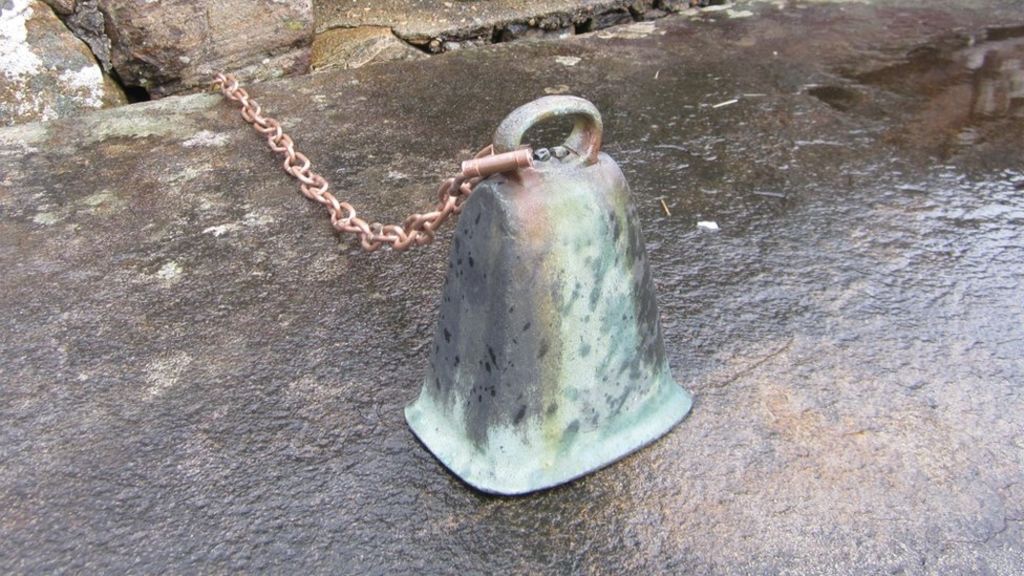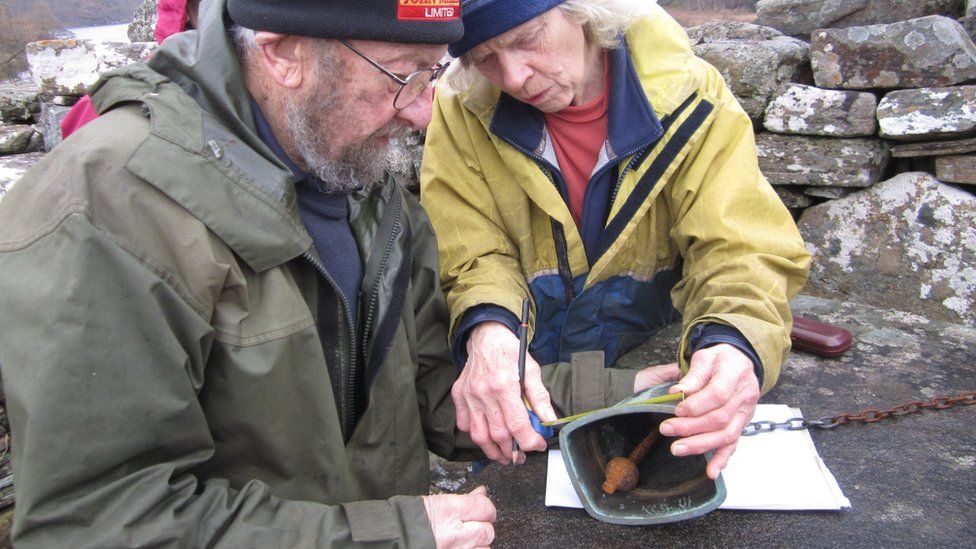Thief Steals 'Cursed' Medieval Bell from 'Harry Potter' Island in Scotland

An early medieval bell on a remote island in a Scottish loch puts a 200-year-old curse on anyone who removes it, according to legend. Locals hope the curse will now fall on the thief who stole the relic.
The bronze hand bell, which may be more than 1,000 years old, was reported stolen late last month. It was taken from a ruined stone chapel on St. Finan's Isle, on Loch Shiel in the Lochaber district of the Scottish Highlands, a location that appeared in the "Harry Potter" movies. The Moidart History Group, which reported the theft to the police, said the ancient bell carried a curse that befell anyone who took the object from the island.
"I hope the curse is genuine," a spokesman for the group told the BBC. [Real or Not? 6 Famous Historical Curses]
Despite the curse, this isn't the first time that a thief has made off with the bell. It was last stolen after the Jacobite rising of 1745 in the Highlands, when Charles Edward Stuart, known as Bonnie Prince Charlie, attempted to restore his family to the British Crown.

After the revolt, a British soldier seized the bronze bell as loot, but it was returned after a chase along Loch Shiel.
"The thief was flogged severely, and the bell [was] returned by his officers," the Moidart History Group said in a statement.
Medieval bell
Bells played an important role in medieval Christian churches. The instruments were used to call local people to prayer services and to keep time in a period when no one wore a watch. The ringing of bells was also thought to drive away demons.
Sign up for the Live Science daily newsletter now
Get the world’s most fascinating discoveries delivered straight to your inbox.
John Dye, a member of the Moidart History Group, told Live Science that the hand bell at St. Finan's Chapel was thought to be much older than the 16th-century church ruins, and Finan may have even carried the bell there himself.

Hand bells were commonly associated with early Irish missionary monks who visited Scotland. The bell at St. Finan's Isle was thought to date to the early medieval period, held in a building that is long gone, "possibly replaced by the present building in the same spot," Dye said.
A similar bell was stolen in 2017 from a church in Perthshire in Highland Scotland, about 70 miles (110 kilometers) from Loch Shiel. It's possible that a collector stole the St. Finan's bell for its religious or historical importance, as it has no monetary value, the Moidart History Group said in its statement.
"It is immensely sad that someone has no regard or respect for the feelings of local people and has seen fit to steal the bell for his or her own profit," the statement said.
Lonely isle
The uninhabited St Finan's Isle, "Eilean Fhianian" in Gaelic, is about 200 yards (180 meters) from the shores of Loch Shiel and has been used as a Christian burial ground since at least the early medieval period.

On the island stands the ruin of a 16th-century stone church known as St. Finan's Chapel; it is said to be the first home in Scotland of the Irish saint later known as Finan of Lindisfarne, who died in the year 661.
The island was later used as a burial site for the Scottish chiefs of the region and as a place of Christian pilgrimage. The Moidart History Group said the isle was probably used for burials long before the Christian period and is still used for some burials today.
In recent years, the "Harry Potter" movies featured Loch Shiel as the location of the Black Lake on the grounds of the Hogwarts School of Witchcraft and Wizardry.
The Moidart History Group said that while St. Finan's Isle once saw only a handful of visitors each year, the numbers had risen over the last five years because of the growing popularity of kayaking.
The thief would have needed heavy bolt cutters to remove the bell, because it had been secured by a heavy, hand-forged bronze chain since 2017, the group said.
- Image Gallery: Two Ancient Curses
- Sinister Sparkle Gallery: 13 Mysterious & Cursed Gemstones
- Operation Mummy's Curse: Photos of Smuggled Artifacts
Original article on Live Science.
Tom Metcalfe is a freelance journalist and regular Live Science contributor who is based in London in the United Kingdom. Tom writes mainly about science, space, archaeology, the Earth and the oceans. He has also written for the BBC, NBC News, National Geographic, Scientific American, Air & Space, and many others.









